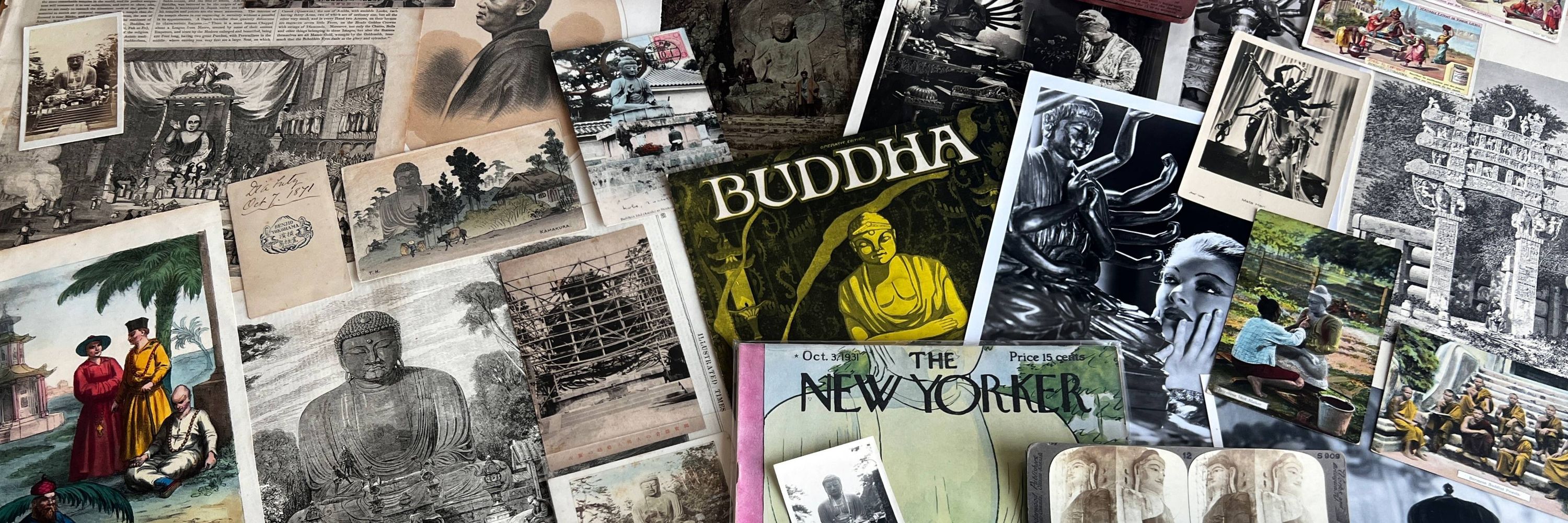
📜 #buddhasinthewest
🌟 New Posts: Mon, Wed, & Fri.
Fifty years later, the statue was destroyed by allied firebomb attacks on Kobe in March 1945.
#Buddhasinthewest

Fifty years later, the statue was destroyed by allied firebomb attacks on Kobe in March 1945.
#Buddhasinthewest
It notes that Shinkōji was a sacred location where the Buddhist priest Ippen (1239–1289), known for his devotion to the Pure Land, passed away. 4/5
#一遍

It notes that Shinkōji was a sacred location where the Buddhist priest Ippen (1239–1289), known for his devotion to the Pure Land, passed away. 4/5
#一遍
the publisher, Sakaeya & Co., was based in Kobe and focused on cards depicting the environs of the bustling port city. 3/5

the publisher, Sakaeya & Co., was based in Kobe and focused on cards depicting the environs of the bustling port city. 3/5
Behind the plastered wall we see the tiled roofs of the bell tower and main hall. 2/5

Behind the plastered wall we see the tiled roofs of the bell tower and main hall. 2/5
One of the city’s main attractions was a giant statue of Vairocana Buddha displayed outside the main temple gate of Shinkōji until the complex was destroyed during WWII. 🧵
🗃️ 📜 #Japan #真光寺

To read a scientific analysis of historical paper-made fumi-e, see Montanari et al., "Kami Fumi-e: Japanese Paper Images to Be Trampled on—A Mystery Resolved" (2025), here: www.mdpi.com/2571-9408/8/...
#buddhasinthewest

To read a scientific analysis of historical paper-made fumi-e, see Montanari et al., "Kami Fumi-e: Japanese Paper Images to Be Trampled on—A Mystery Resolved" (2025), here: www.mdpi.com/2571-9408/8/...
#buddhasinthewest
Had they taught the "simple truth, without the use of images," Hurd implies the Japanese may have embraced Christianity, turning away from idolatry altogether. 5/6
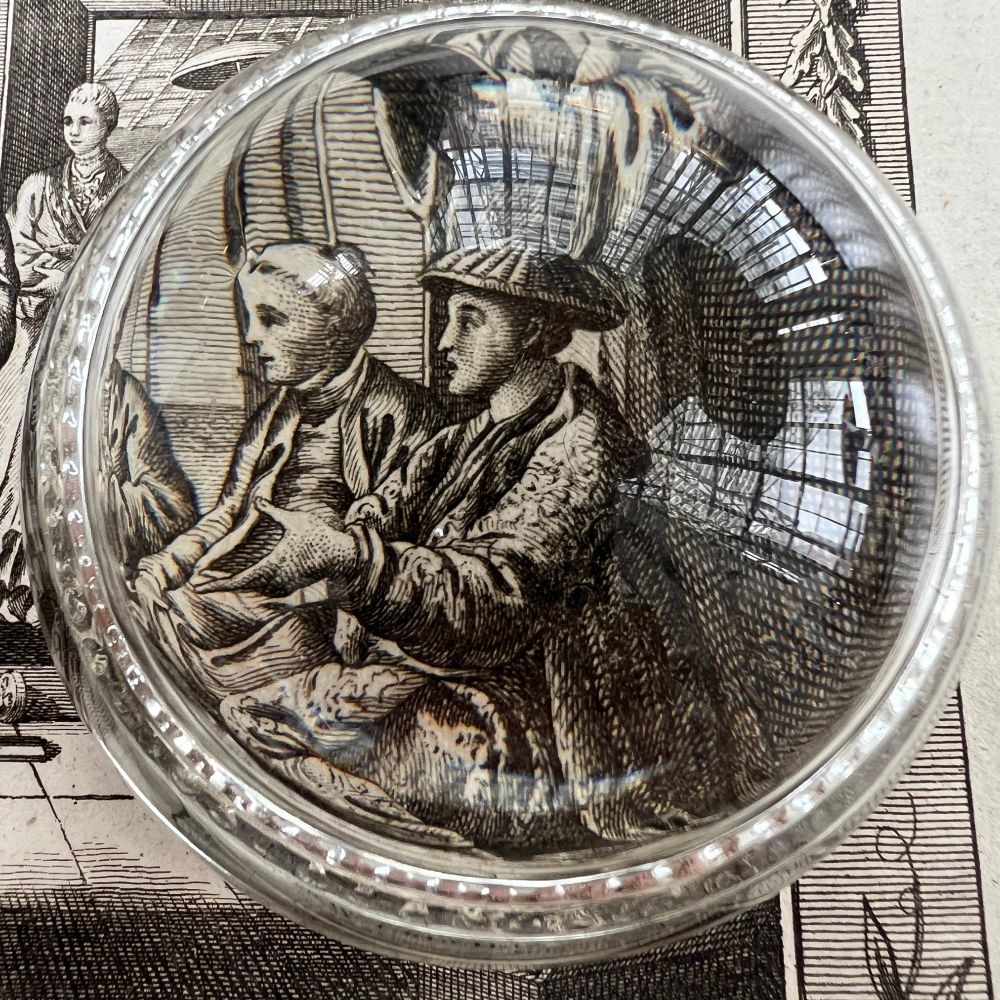
Had they taught the "simple truth, without the use of images," Hurd implies the Japanese may have embraced Christianity, turning away from idolatry altogether. 5/6
William Hurd's New Universal History (1780) copied the main engraving from an older work, but added this detail to help further contextualize the depicted activity as demonic. 4/6

William Hurd's New Universal History (1780) copied the main engraving from an older work, but added this detail to help further contextualize the depicted activity as demonic. 4/6
For European Christians, such actions were perceived as a vile act of paganism, reflected in this engraving by a buddha with devil horns. 3/6

For European Christians, such actions were perceived as a vile act of paganism, reflected in this engraving by a buddha with devil horns. 3/6
If anyone refused, authorities turned to torture to procure apostasy, or they were killed. 2/6
#隠れキリシタン #踏絵

As knowledge of this practice spread to Europe, depictions of "treading on the crucifix," appeared in illustrated works by the 18th century. 🧵
🗃️ 📜 #Japan

As knowledge of this practice spread to Europe, depictions of "treading on the crucifix," appeared in illustrated works by the 18th century. 🧵
🗃️ 📜 #Japan
#buddhasinthewest

#buddhasinthewest
Each arhat had his own distinctive features and this figure was known as "The Arhat Who Reveals His Heart." 4/5
#開心羅漢

Each arhat had his own distinctive features and this figure was known as "The Arhat Who Reveals His Heart." 4/5
#開心羅漢
The placement of two young novice monks adds weight to the perception this icon was the object of prayer for hopeful parents. 3/5

The placement of two young novice monks adds weight to the perception this icon was the object of prayer for hopeful parents. 3/5
Hoping to write home, French colonial soldiers were the primary clientele for postcards; this card was sent to France by an infantry member in 1911. 2/5
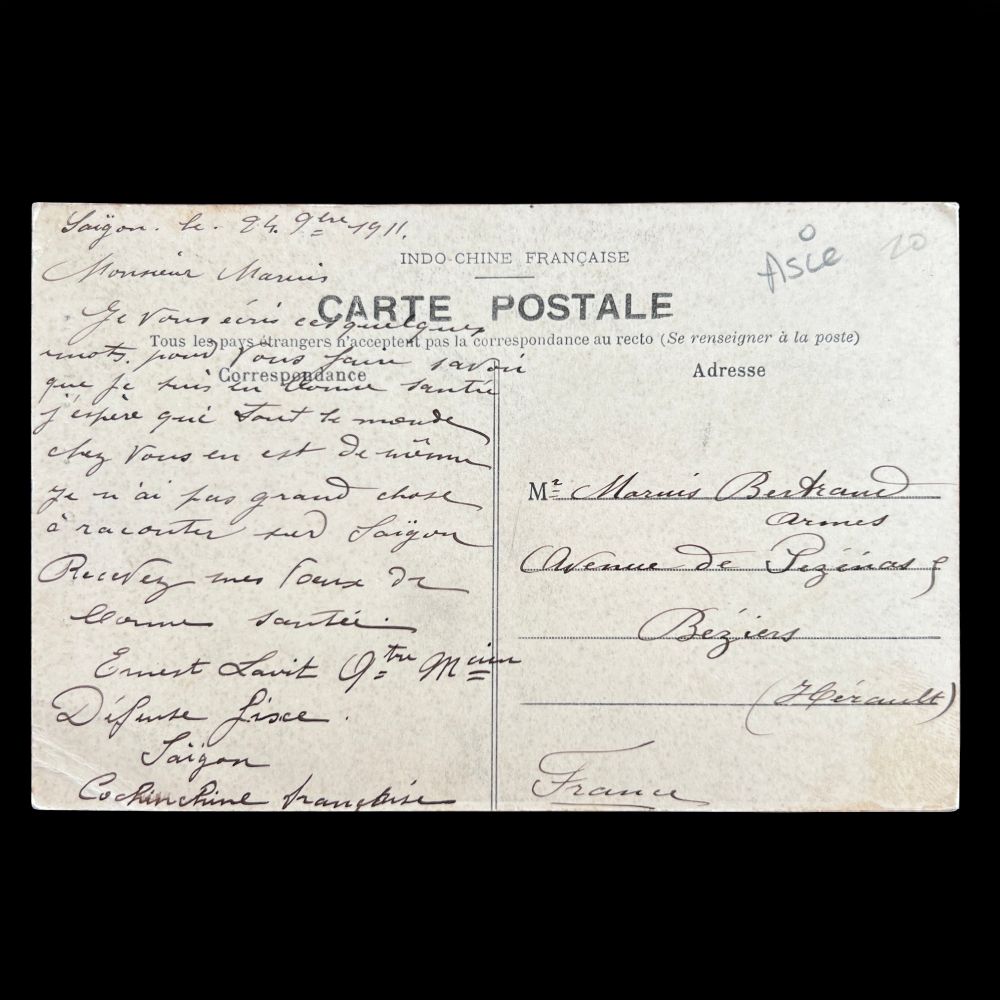
Hoping to write home, French colonial soldiers were the primary clientele for postcards; this card was sent to France by an infantry member in 1911. 2/5
The first commercial photography studios in Vietnam opened in Saigon soon afterwards, with some producing intimate views of local Buddhist temple life. 🧵
🗃️ 📜 #Vietnam
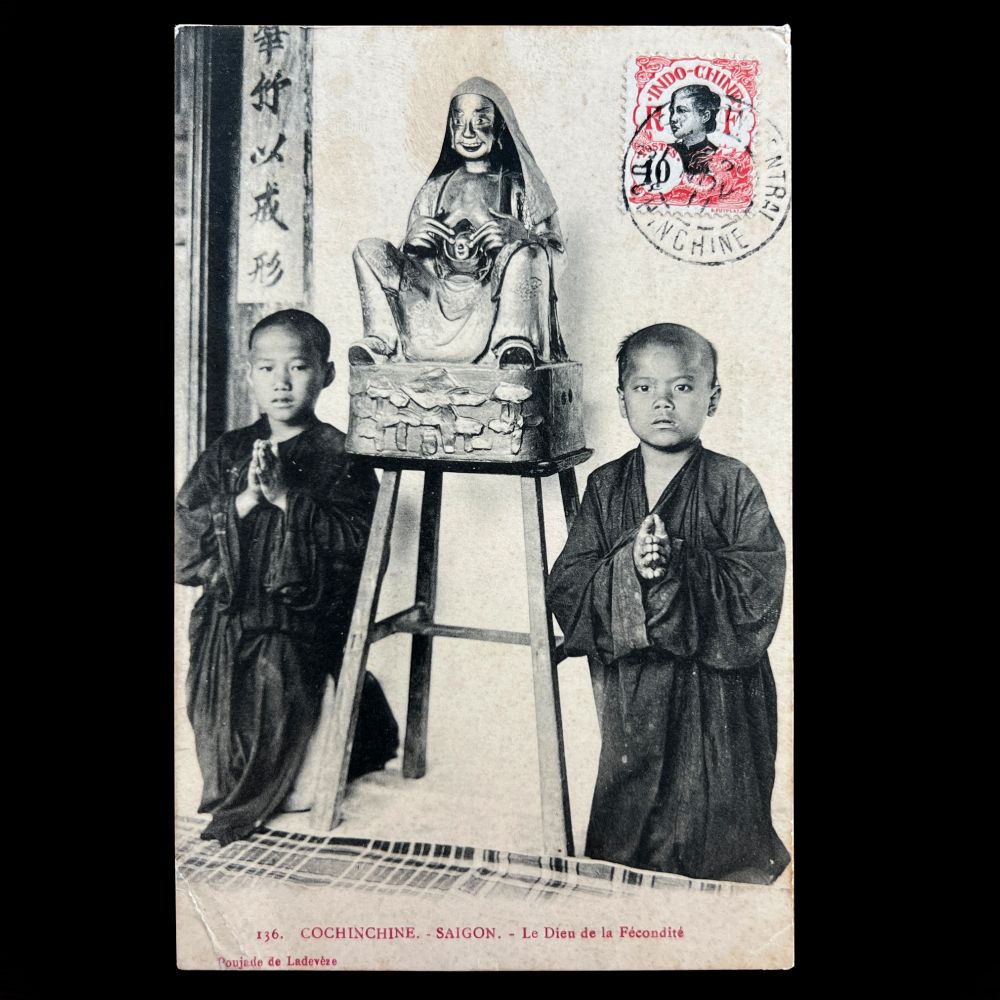
The first commercial photography studios in Vietnam opened in Saigon soon afterwards, with some producing intimate views of local Buddhist temple life. 🧵
🗃️ 📜 #Vietnam
Popular Science ran a short article on the film, showing the construction of a new plaster buddha, is it the same one? Article viewable here: tinyurl.com/3jzhc3rj
#buddhasinthewest

Popular Science ran a short article on the film, showing the construction of a new plaster buddha, is it the same one? Article viewable here: tinyurl.com/3jzhc3rj
#buddhasinthewest
Moreover, a very similar plaster buddha was created for Universal's The Breath of the Gods in 1920, before Hall was hired, starring Tsuru Aoki. 4/5

Moreover, a very similar plaster buddha was created for Universal's The Breath of the Gods in 1920, before Hall was hired, starring Tsuru Aoki. 4/5
Was this buddha statue a creation of Hall for a new Universal film? 3/5
![Image shows a magnifying globe highlighting the inscription, it reads in full: “Carl at Universal Movie Studio’s. “ [Universal] City, Calif. APR. 6, ‘29](https://cdn.bsky.app/img/feed_thumbnail/plain/did:plc:ftj2bmay74kldpsbikim2lnu/bafkreihsmghcihs3io4zcmtpty3v67jpgllhkwnpspy6mvmxlgxclrs7xy@jpeg)
Was this buddha statue a creation of Hall for a new Universal film? 3/5
Here we see a photograph (and duplicate) of the Universal backlot where a visitor sizes up one of the plaster buddhas on display. 2/5

Here we see a photograph (and duplicate) of the Universal backlot where a visitor sizes up one of the plaster buddhas on display. 2/5
Through the 1920s studio art directors built bigger sets and fine Buddhist statuary that was once purchased or borrowed was increasingly made of wood and plaster. 🧵
🗃️ 📜 #Hollywood

Through the 1920s studio art directors built bigger sets and fine Buddhist statuary that was once purchased or borrowed was increasingly made of wood and plaster. 🧵
🗃️ 📜 #Hollywood
This illustration shows the one built at Hachiman Shrine which was destroyed in 1870, several decades before this card was issued.
#buddhasinthewest #多宝塔
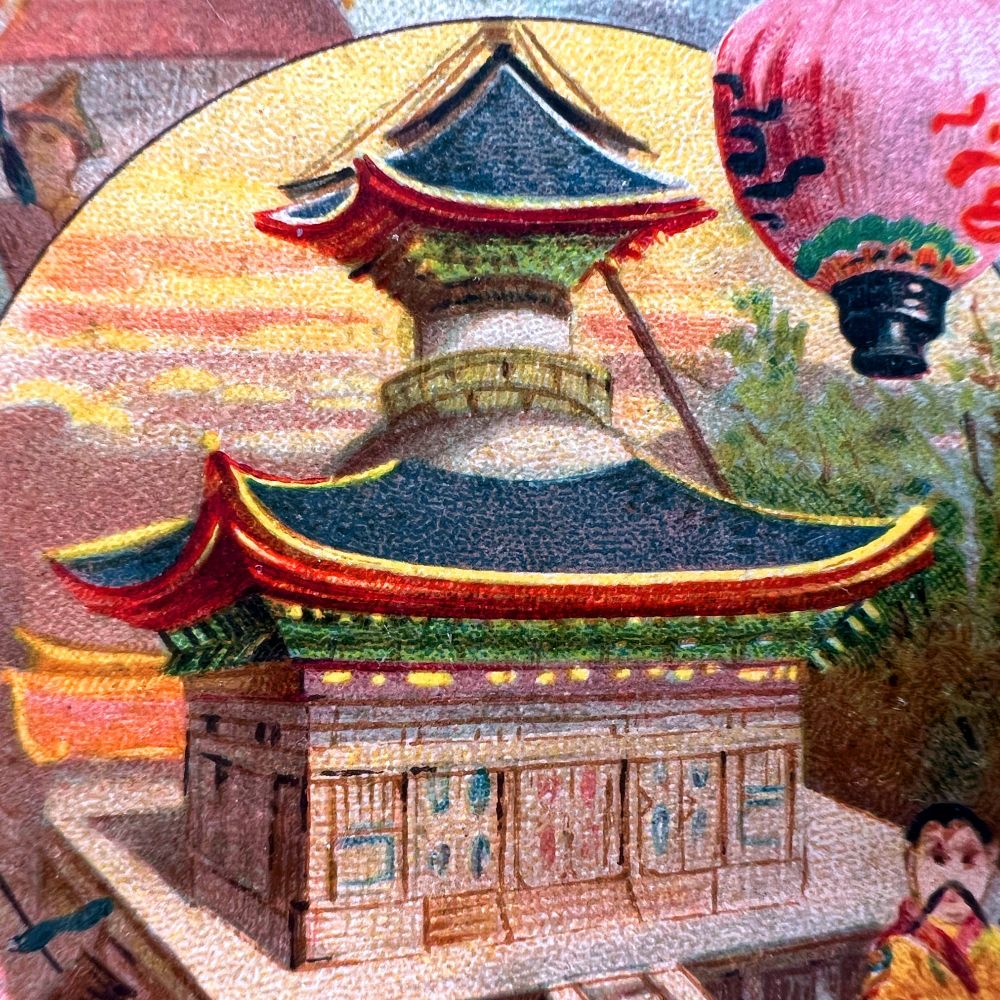
This illustration shows the one built at Hachiman Shrine which was destroyed in 1870, several decades before this card was issued.
#buddhasinthewest #多宝塔
Pronounced ethnic facial features and flowing silk garments were sometimes used to signify "authentic" Asian religions iconography. 4/5

Pronounced ethnic facial features and flowing silk garments were sometimes used to signify "authentic" Asian religions iconography. 4/5
The printer, Vieillemard Fils & Cie., was a premier lithographer for major French trade card producers of the era. 3/5

The printer, Vieillemard Fils & Cie., was a premier lithographer for major French trade card producers of the era. 3/5
Such imagery had circulated in Europe since the late 18th century through southern Chinese export paintings depicting popular Chinese occupations. 2/5

Such imagery had circulated in Europe since the late 18th century through southern Chinese export paintings depicting popular Chinese occupations. 2/5

